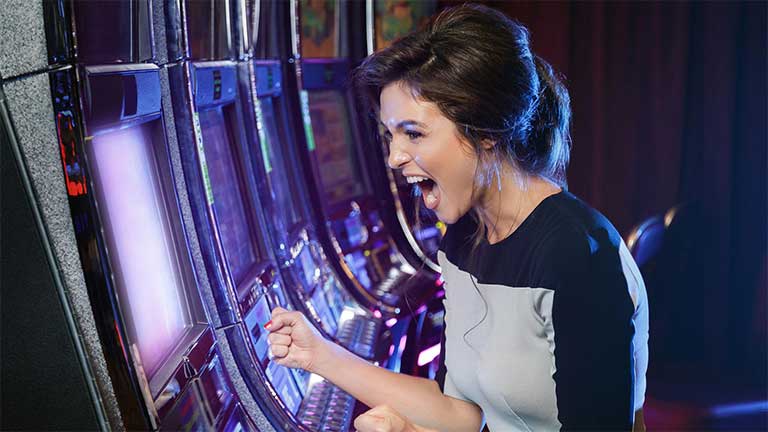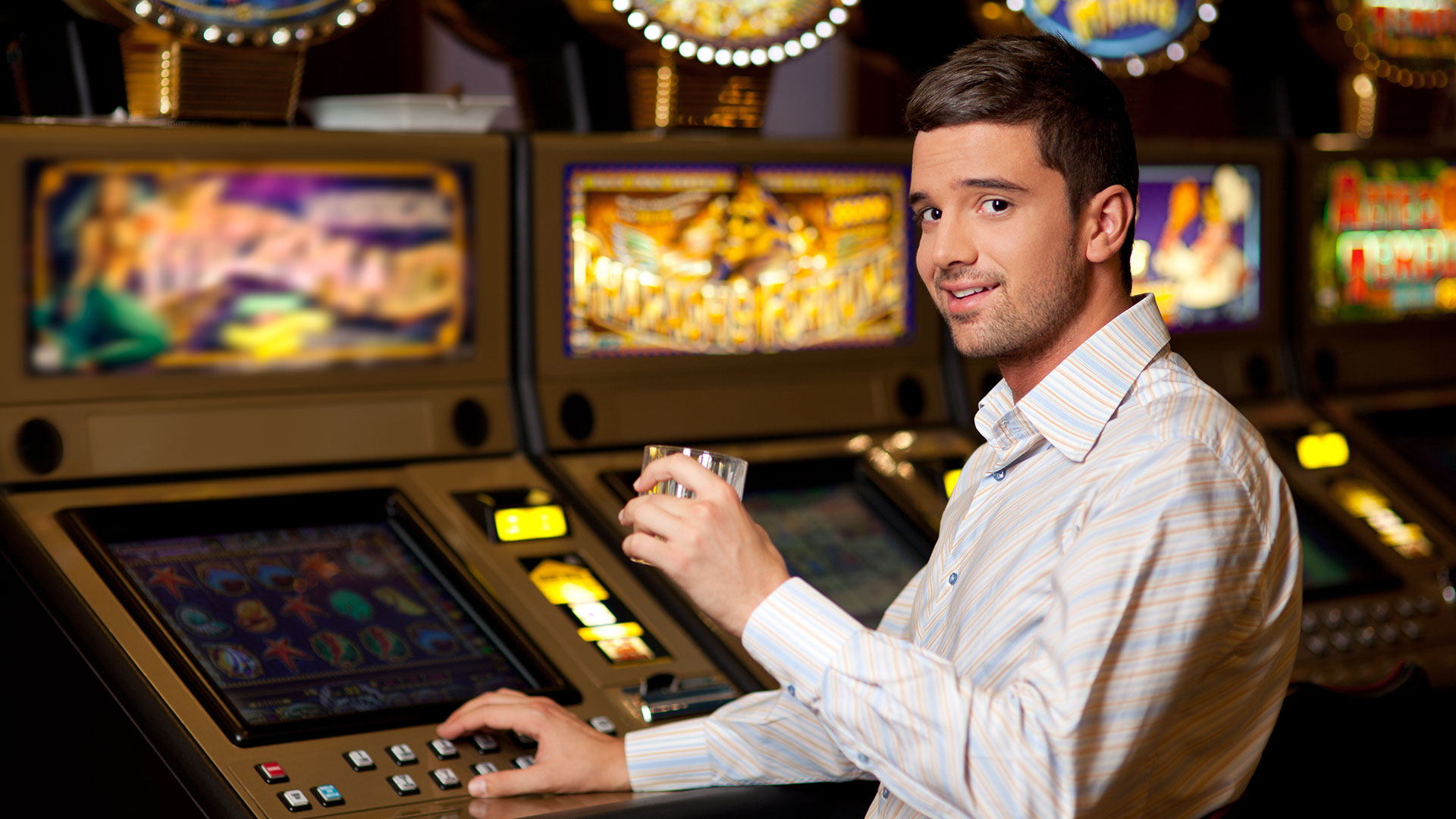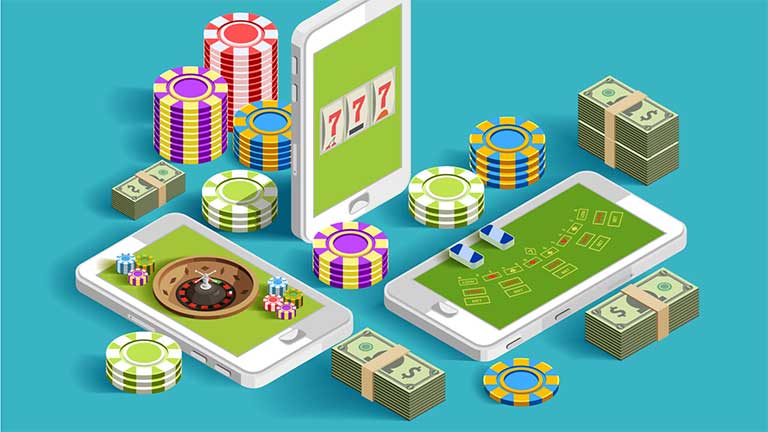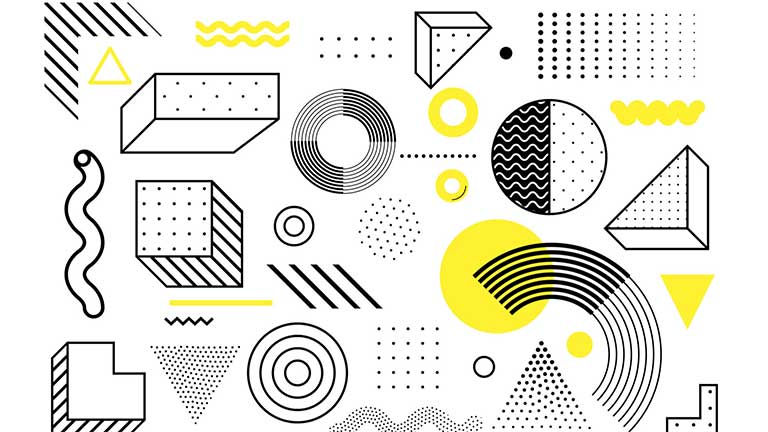On the Seventh Day, God rested.
Nonetheless, Charles Fey could not. Creation was occurring at his machine shop in San Francisco in the year 1896. From just a hunk of metal he brought forth the slot machine. And all manner of enterprise pales in comparison. With a single pull of the handle, the stuff of space and time becomes one. Lo, behold the one-armed bandit.
Is it possible that there is among you a person who has not played slot machines, or felt the lure of instant wealth offered for a meager investment?
The slot machine has become synonymous with gambling activity. From its humble beginnings as the Liberty Bell, the slot machine has become the mainstay of a mighty gambling empire. No longer sequestered in back rooms or barbershops, the modern computerized machine runs center stage in every casino worldwide. From Las Vegas to Nepal, the slot machine and its players have become the backbone of the gaming industry.
A Machine for the People

In days gone, "real" gamblers would never have thought of playing slot machines. Initially an amusement provided by the gambling houses to occupy the thoughts and time of the women who accompanied the men who played at games of chance; a mere diversion. Never would a gambler admit, nor be seen, indulging in the lure of the machines.
Early on, the slot machines became the gambling symbol of the lower and middle class. It afforded diversion, a prospect of financial gain and could be indulged in for a paltry sum. A person of limited means could experience the same thrills and excitement of a high roller. Never had such a devious device been so underrated.
It allowed its participant to indulge in a world of fantasy while extracting a tidy profit for its owners. A glittering jewel of deceit lay in the opened Pandora's box. A promise of fortune and escape awaited all that played.
Just insert and pull
The operation of slot machines is deceptively simple. Inside the machine housing resides a number of individual wheels, called reels, riding on a common shaft. Symbols are placed on the face of these reels. When the handle is pulled, it releases all the reels, allowing them to spin freely.
As each is stopped by an armature, its symbol shows through the glass window on the front of the machine. Should the symbols align in a specified order or type, the machine will make a payoff in coin. Otherwise it will await a new investment. The number of stops and or symbols times the number of reels determines the number of possible combinations available on a machine.
On the early machines, there were only 10 symbols per reel. So that 10 X 10 X 10 = 1000 possible combinations. However, each reel contained only one symbol that allowed the top payout, and each of these symbols had to line up in the window, allowing only one possible opportunity in 1000 of hitting the top prize.
There were other combinations that paid lesser payoffs as well. In the more modern machines, each reel contained up to 25 or more stops and often the number of reels was increased from three to four or five. This allowed for a great variety of possible combination and payoffs.
The Classic re-Designed
However, in case you'd forgotten, these were designed to provide entertainment for the player and a profit for their owner, therefore even when the machine would hit, it would pay off at less than true odds, providing a guaranteed income.
The Liberty bell, the machine first manufactured by Mr. Fey, contained symbols of playing cards, stars and horseshoes on the reels with, of course, the Liberty Bell symbol providing both the name of the machine as well as the symbols for the largest payout.
Although all slot machines follow this basic design, these early machines required a good deal of maintenance and supervision, as they were easily rigged or gaffed. Charles Fey put his machines in taverns, gambling halls, or cigar stores on a fifty-fifty basis, operating like any small business.
In 1906, Herbert Stephen Mills put out a redesigned Liberty Bell and the slot machine became a real business. Mills added a window for viewing the previously played coins, providing a tempting view of the riches to be had. He also added a second and third row, one each above and below the payout window to allow players to "see" how close they had come to winning. Mr. Mills also changed the symbols from those clearly related to gambling, to a more palatable variety of symbols as well as the number of stops per reel to 20. This was to become the standard for many years.
Many people manufactured and supplied slot machines over the years with some very unusual and innovative designs along the way. Electromechanical machines began replacing the earlier mechanical models in the '50s and '60s. They were the same basic machine with more horns and whistles, better security, more reliability and larger payouts.
By the early '70s, the computer or microprocessor became the brains of the machines. Only on the outside did they look like the machines of old. Now Random Number Generators (RNG) determined the symbols and payouts. The machines' activity could be closely monitored and controlled while guaranteeing high security and player friendly service.
A new kind of player on the horizon
Although much has changed, the original idea stays the same. You pay your money and take your chances! The interior of the machine has changed considerably over the years, yet the principle remains the same. However, there is one change that is of extreme importance.
Slot machine players have risen from being a tolerated afterthought, to a sought-after and pampered clientele. The mainstay of most casinos and resort destinations is the new breed of slot player. Knowledgeable and savvy, they demand a new respect from the establishments desiring their attendance.









